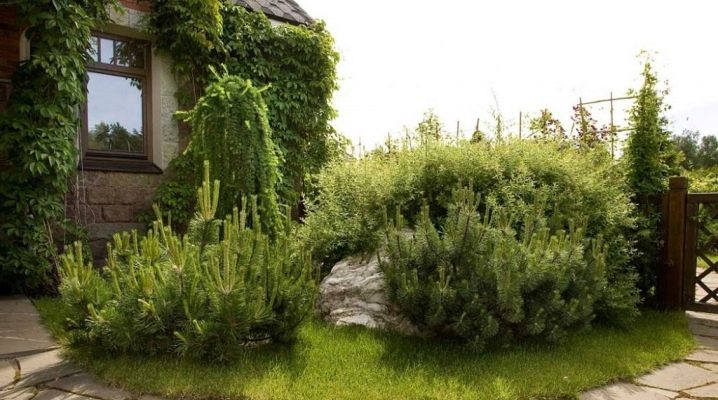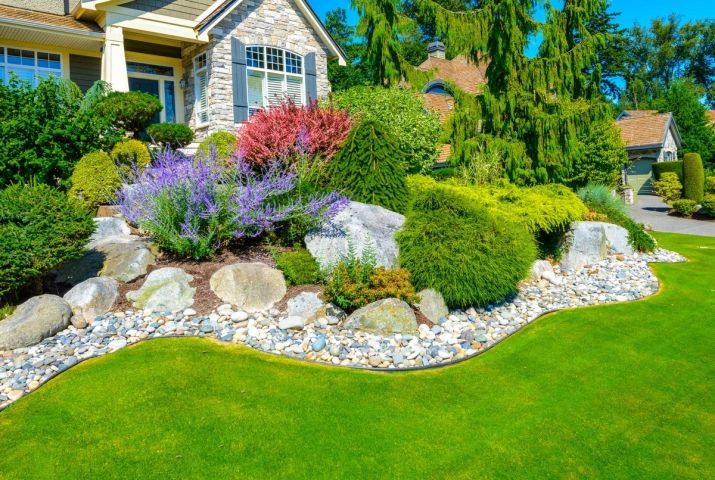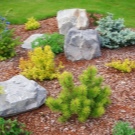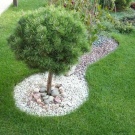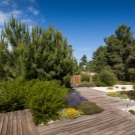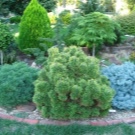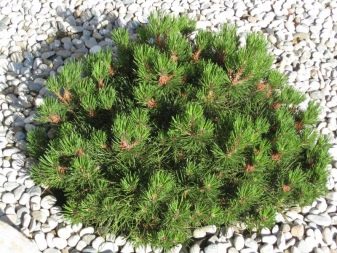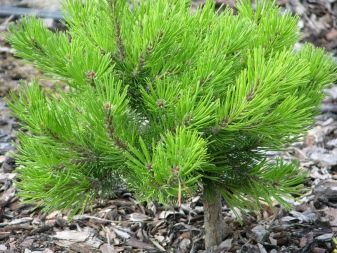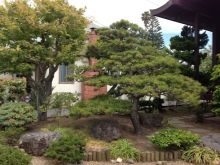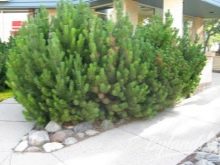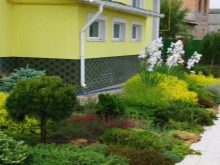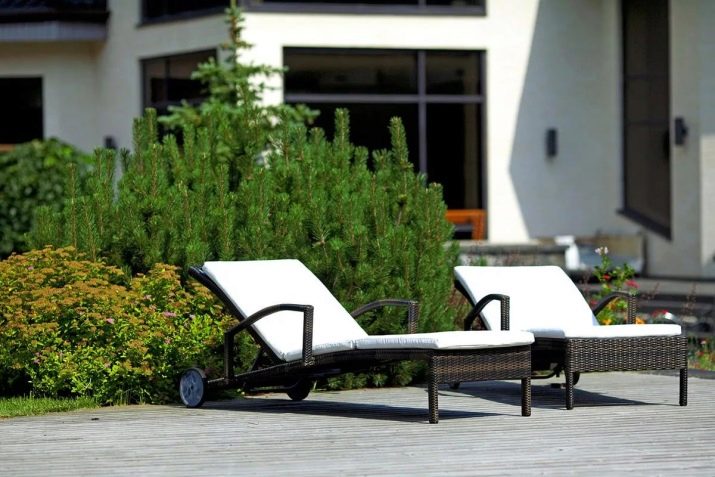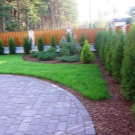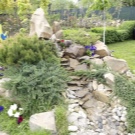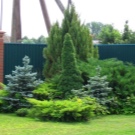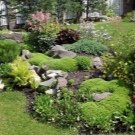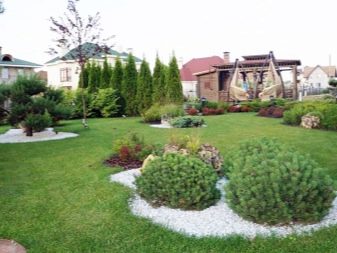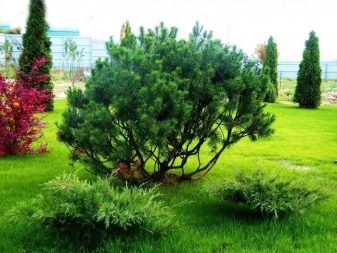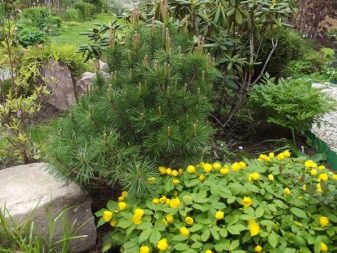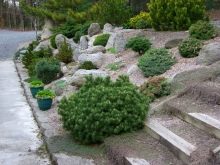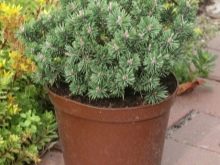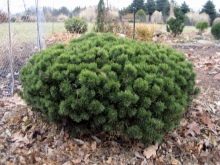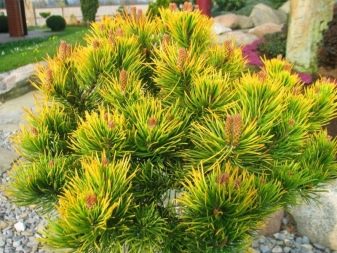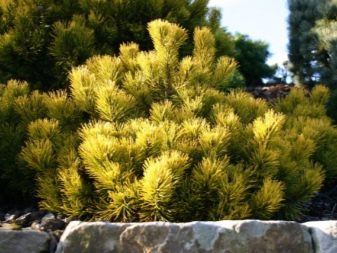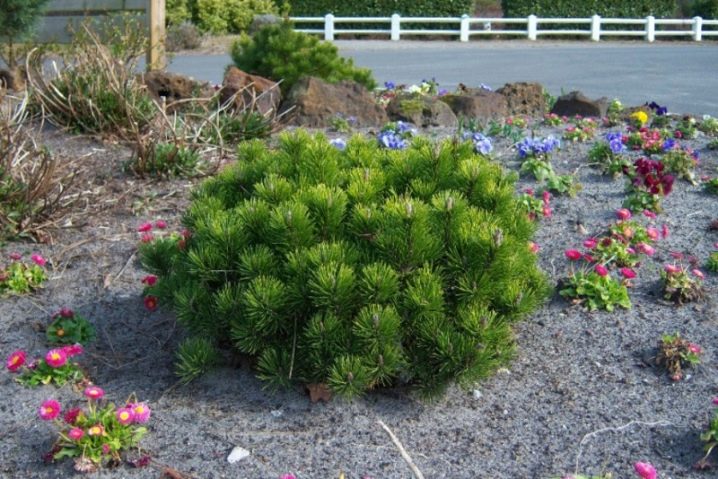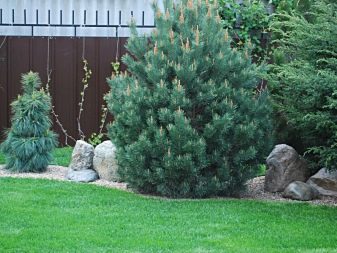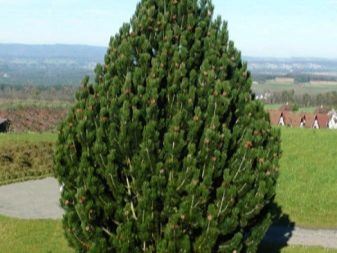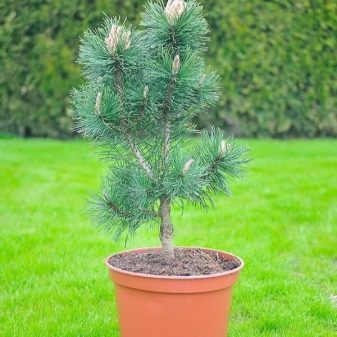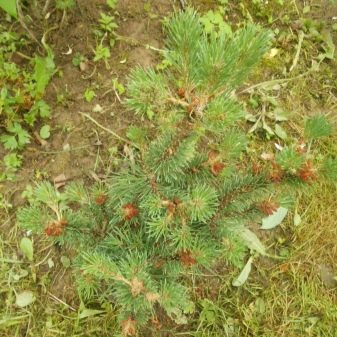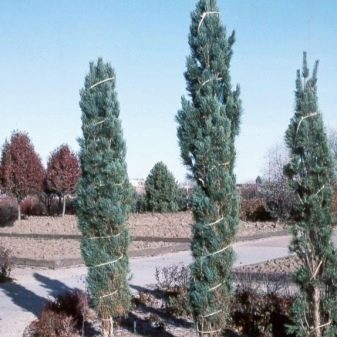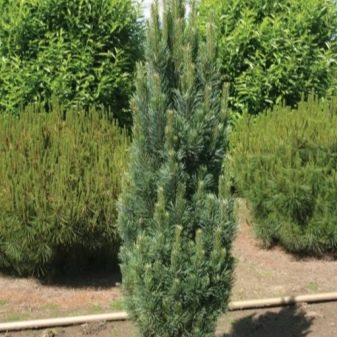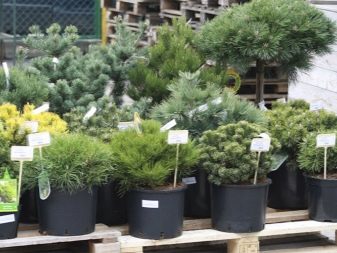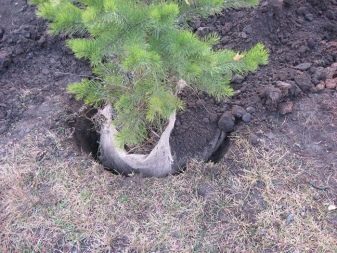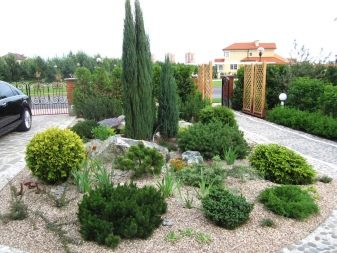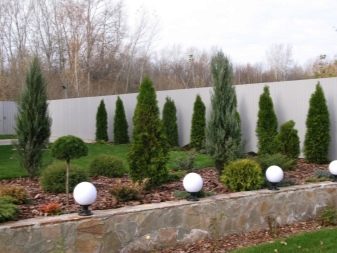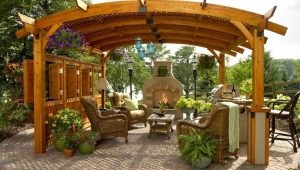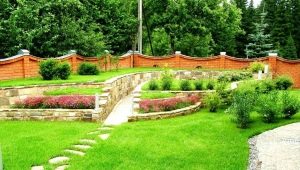Use of mountain pine in landscape design
Landscape design is the art of decorating the local area. This segment combines several areas at once: design, construction, plant growing (botany), design and architecture. To create stylish and expressive compositions of living plants and additional elements, various varieties of flora representatives are used. Mountain pine is especially popular in landscape design.
Description
Designers love to use conifers in landscape decoration. Mountain pine is often used for refining not only the local area, as well as gardening squares, gardens, parks and others. Homeland of this type of wood - Western Europe. At present, in the wild, pine grows in the Crimea peninsula, in the Carpathians, on the southern coast of Europe, and in the Baltic states.
A valuable and attractive shrub-shaped plant can have different heights. This indicator varies from 0.5 meters to six meters. Crown sizes are also significantly different. The trunk in a brown color is covered with small scales. Needles are tightly relative to each other, thereby creating a special effect of pomp.
The tree grows slowly. In the period from 6 to 10 years of life, it begins to bear fruit (small bumps in soft brown color).
The popularity of mountain pine was influenced by the fact that it is famous for endurance and simple care.
Features of placement on the territory
The plant attracts the attention of a particular decoration. Tree instantly decorate the land. Professionals from the sphere of decorating house territories and customers note its refined and sophisticated appearance.
Thick and fluffy crown of a tree give a different shape at the request of the client. The variety is great for decorative decoration of various territories. (gardens, parks, boulevards, etc.).
Mountain pine looks great on a plot near cottages, country houses and various commercial facilities.
Experts claim that the various varieties of mountain pines ideal for decoration of a rock garden, alpine gardens, as well as evergreen compositions and sculptures. Plants on a shtamba (a high trunk without branches) and small fur-bearing shrubs are used. Plants look great in a single copy, and in combination with other plants. Miniature varieties are used to create flower beds, as well as decorating balconies, verandas and miniature areas. From a pine the stylish "live" fence turns out.
Merits
The first advantage of mountain pine is beauty. It is distinguished by a magnificent crown, a variety of colors of needles, an unusual color of cones, expressive trunks. Each species has a special appearance.
Compact dimensions of a tree are ideally suited for arrangement of an original and stylish landscaping. For miniature compositions you can pick up the smallest species.
Plants take root in virtually any soil, regardless of its composition. This greatly facilitates the process of adaptation of the tree in the new terrain. Mountain pine shows resistance to drought and does not need constant watering.Even a beginner, unfamiliar with gardening and botany, can provide proper tree care.
Also shrubs are not afraid of frost. Due to this property, the plant can be planted in a region with harsh winters. Mountain plants will help create a comfortable and healthy microclimate. The fragrant smell of pine needles purifies the air from harmful elements.
Pine can be planted in an urban environment in which there are acute problems with the environment.
Popular varieties
There are about 100 different types of mountain pine. Consider the most popular and sought after ones.
"Pug"
This name is a variety due to its miniature size. Dwarf shrub has a spherical shape. Thick branches, more like spruce shoots, give the plant an original lush appearance. For the year the shrub grows about 3-5 centimeters. The color of the needles is bright green. Pay attention to this variety, if you choose a plant to design an alpine slide or a small composition. The variety is not afraid of frost and other vagaries of weather.
Winter Gold
The next dwarf species of mountain pine. This variety attracts the attention of amazing color.In the warm season, the plant has a rich and thick green color that is standard for needles, and with the arrival of winter the color changes to golden yellow. "Winter Gold" is perfect in order to make in the overall plant composition of bright colors. Yellow is a perfect match with green.
This variety is perfect for creating a small "live" fence. In group plantings pine of this species also looks great.
"Pumilio"
The maximum height of this variety can reach up to three meters. This species grows slowly.
Its differences:
- The branches have different lengths. Growth direction - up.
- Cones of the original purple or lilac hues.
- Short and lush needles.
Like the above varieties, this option does not require special care and tolerates frost well. "Pumilio" is actively used on the basis of parks and gardens.
"Compact"
The variety of “Compact” charms with a thick and lush crown in the shape of a ball, as well as a multitude of trunks. This is a tall plant, whose height reaches 4-5 meters. Long needles have a rich dark green color.
Professional gardeners are advised to plant this species in single copies or groups.
"Frisia"
This variety is actively used to create exquisite landscape design in the Russian regions. He hails from Norway, from the sand dune region. The maximum height reaches two meters. Magnificent crown consists of straight branches. Bright green color is great for decorating areas around houses and cottages.
Pine ordinary ("fashigiata")
This slowly growing variety stands out against the rest of the elongated narrow crown. Color has a blue outflow. The maximum tree height can be up to eight meters. The diameter of the crown will be about two meters.
The branches are strongly pressed to the trunk, thereby creating a columnar shape. Over the year, the tree adds 20-30 centimeters in height. Needles are collected on two needles, which gives it a great pomp.
The grade perfectly feels in the conditions of a penumbra and in open territories. The plant is unpretentious, but it is better not to plant it in the soil with an excess of moisture. This species tolerates frost and drought.
Pine "fashigiata" is ideal for creating input compositions.
How to plant?
Experts say that it is better to plant a mountain pine in the spring (April-May). September is also ideal for landing. In the first month of autumn, optimal conditions are preserved, suitable for planting mountain pines of various varieties. In winter, it is possible to plant adult plants, whose age ranges from 3 to 5 years.
An ideal place for mountain pines is a sunny plot. For coniferous plants is perfect sandy soil. The optimum depth of the landing pit is about one meter. If the soil is heavy, some drainage must be filled into the pit. Use broken bricks and expanded clay. Add special fertilizer during the landing.
The root neck of the plant must be on a par with the ground. If you deepen it, the pine tree will hurt and lose its attractiveness. In the case of large varieties, the neck needs to be lifted just above the ground - about 5-10 centimeters. After planting, the tree will independently fall to the desired level.
The ideal gap between compact plants should be about 1-2 meters. Larger specimens need to be planted from each other at a distance of 4 meters.
Competent care
Despite the fact that the mountain pine is famous for its unpretentious care, the plant needs some care. Remember the basic rules:
- Regular and thorough watering is necessary during the rooting period. It lasts for one month. At other times, constant watering is not required. Water the plant more often during droughts.
- For three years after planting, the pine is carefully fertilized. It is recommended to opt for mineral compounds.
- Mountain pine survives on any soil, but sand and sandy loam is best suited for it. It can be purchased in specialized stores. Pine grows remarkably on rocky slopes.
- Loosened soil is the key to the beauty and health of the tree.
- Despite the resistance to cold, in severe frosts it is recommended to cover shrubs with spruce branches.
- Mountain pine loves the sun's rays and fresh air. In this regard, it is necessary to ensure the circulation of air flow in the area where it grows.
- In the shade a plant can get sick and even die.
For more information about planting and caring for mountain pine, see the following video.
